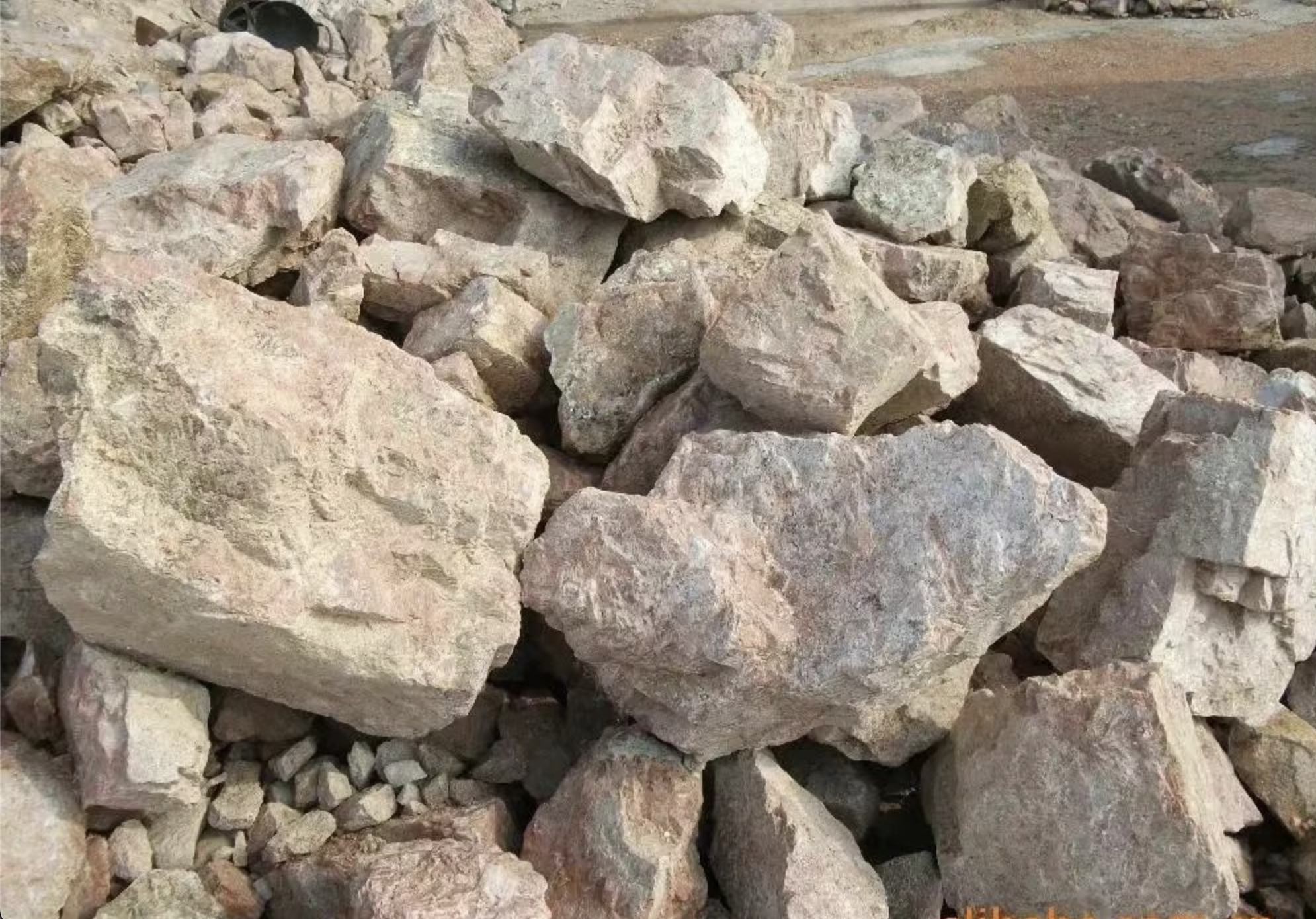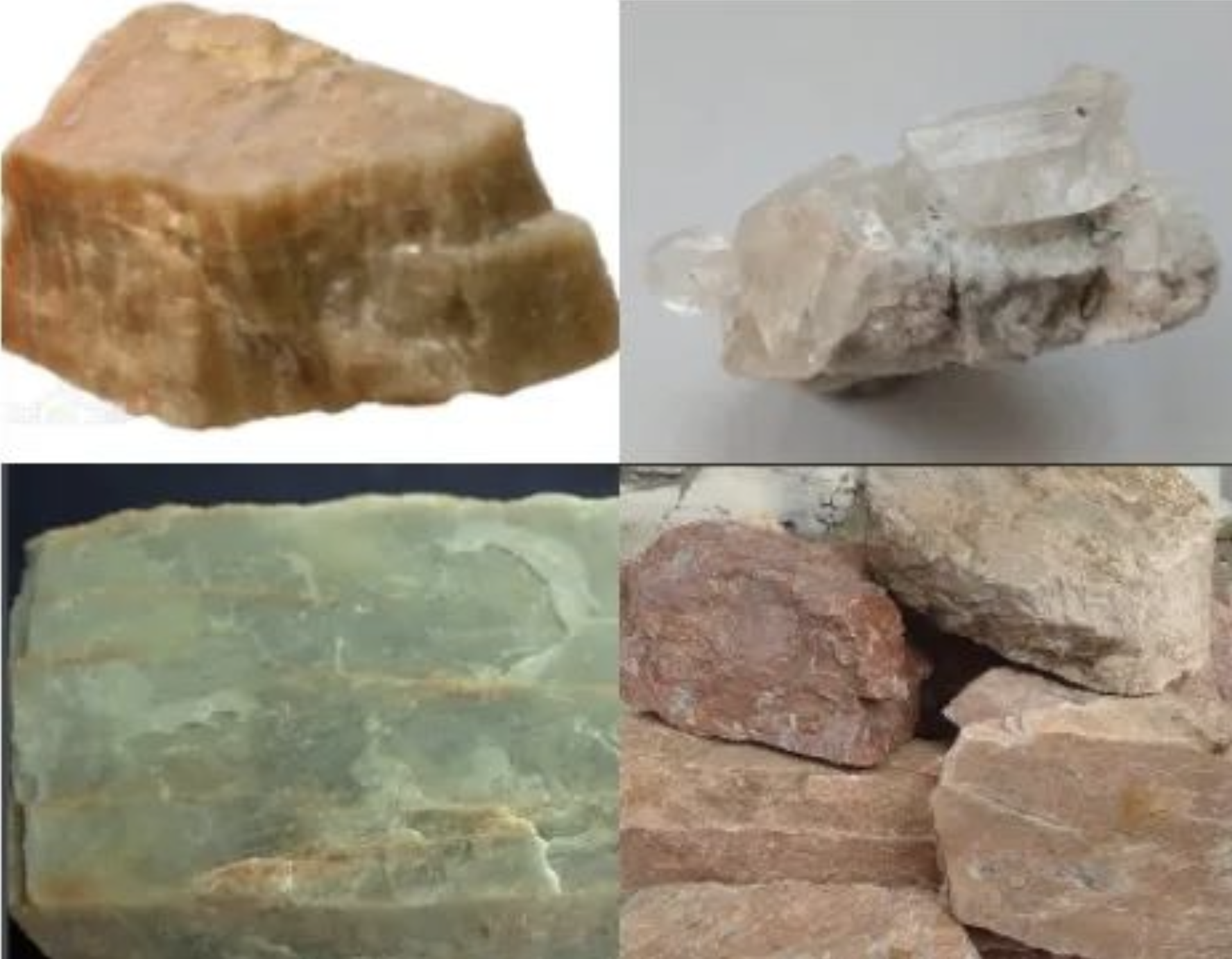Feldspar is one of the most important rock-forming minerals in the earth's crust. Potassium or sodium-rich feldspar is widely used in ceramics, enamel, glass, abrasives, and other industrial sectors. Potassium feldspar, due to its high potassium content and being a non-water-soluble potassium resource, can be used in the future for manufacturing potash fertilizer, making it an important strategic mineral resource. Feldspar containing rare elements such as rubidium and cesium can serve as a mineral source for extracting these elements. Beautifully colored feldspar can be used as decorative stone and semi-precious gemstones.

Apart from being a raw material for the glass industry (accounting for about 50-60% of total consumption), feldspar is also used in the ceramics industry (30%), with the rest used in chemicals, abrasives, fiberglass, welding electrodes, and other industries.
Glass Flux
Feldspar is one of the main components of glass mixtures. With high Al₂O₃ content and low iron content, feldspar melts at a lower temperature and has a wide melting range. It is mainly used to increase the alumina content in glass mixtures, reduce the melting temperature, and increase the alkali content, thus reducing the amount of alkali used. Additionally, feldspar melts slowly into glass, preventing the formation of crystals that can damage the product. Feldspar also helps regulate the viscosity of the glass. Generally, potassium or sodium feldspar is used in various glass mixtures.
Ceramic Body Ingredients
Before firing, feldspar acts as a thinning raw material, reducing the drying shrinkage and deformation of the body, improving drying performance, and shortening drying time. During firing, feldspar acts as a flux to lower the firing temperature, promoting the melting of quartz and kaolin, and facilitating the formation of mullite in the liquid phase. The feldspar glass formed during melting fills the mullite crystal grains in the body, making it denser and reducing porosity, thereby increasing its mechanical strength and dielectric properties. Additionally, the formation of feldspar glass enhances the translucency of the body. The amount of feldspar added in ceramic bodies varies according to the raw materials and product requirements.
Ceramic Glaze
Ceramic glaze is mainly composed of feldspar, quartz, and clay, with feldspar content ranging from 10-35%. In the ceramics industry (both body and glaze), potassium feldspar is primarily used.

Physical and Chemical Properties
Feldspar is a mineral widely present on earth, with high potassium content known as potassium feldspar, chemically represented as KAlSi₃O₈. Orthoclase, microcline, and sanidine are all potassium feldspar minerals. These feldspars have good chemical stability and are generally resistant to acid decomposition. They have a hardness of 5.5-6.5, a specific gravity of 2.55-2.75 t/m³, and a melting point of 1185-1490°C. Commonly associated minerals include quartz, muscovite, biotite, beryl, garnet, and small amounts of magnetite, columbite, and tantalite.
Classification of Feldspar Deposits
Feldspar deposits are mainly classified into two types based on their genesis:
1. **Gneiss or Migmatitic Gneiss**: Some veins occur in granite or basic rock masses, or in their contact zones. The ore is mainly concentrated in the feldspar block zone of pegmatites or differentiated feldspar pegmatites.
2. **Igneous Rock Type Feldspar Deposits**: These deposits occur in acidic, intermediate, and alkaline igneous rocks. Those found in alkaline rocks are most important, such as nepheline syenite, followed by granite, albite granite, orthoclase granite, and quartz orthoclase granite deposits.
Based on the mineralization process of feldspar, feldspar deposits are divided into igneous rock type, pegmatite type, weathered granite type, and sedimentary rock type, with pegmatite and igneous rock types being the main ones.
Separation Methods
- **Manual Sorting**: Based on the obvious differences in shape and color from other gangue minerals, manual sorting is employed.
- **Magnetic Separation**: After crushing and grinding, magnetic separation equipment such as plate magnetic separators, LHGC vertical ring high gradient magnetic separators, and HTDZ electromagnetic slurry magnetic separators are used to remove weakly magnetic iron, titanium, and other impurity minerals for purification.
- **Flotation**: Mainly uses HF acid under acidic conditions, with amine cations as collectors for separating feldspar from quartz.
For more information on Huate magnetic separators and how they can assist in the purification and separation of feldspar and other minerals, visit our website. Huate Magnetic Separator offers advanced magnetic separation solutions tailored to your industrial needs.
Post time: Jun-28-2024
